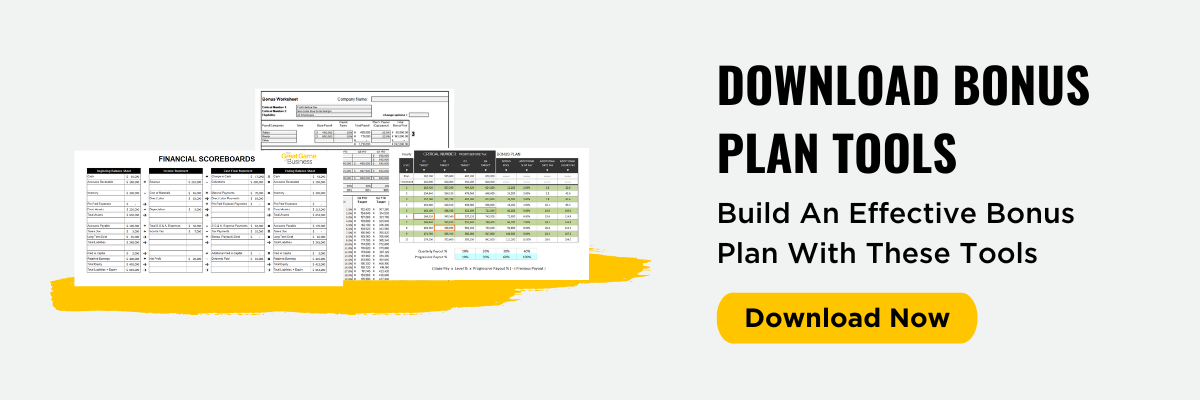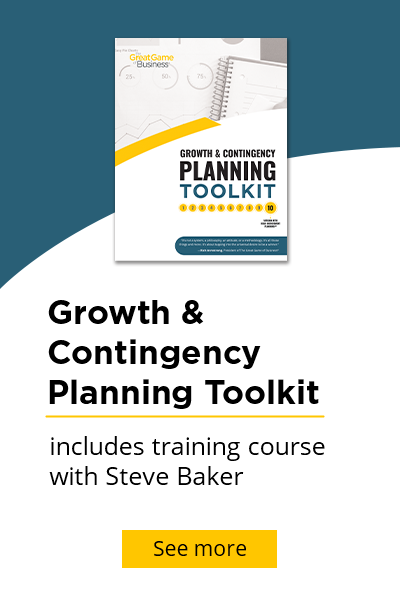
Did you have a bonus plan in place last year? If so, was it effective? How is this year’s plan working out?
If you have a good year and want to share some of the fruits of your labor with your team, great, but to do so without a well-planned and executed bonus plan is a wasted opportunity. So, here’s a list of best bonus and incentive practices to help you get the most bang for your bonus bucks.
1. Get an Early Start
In order to get a good start on a successful bonus plan, get ahead and begin the planning process for next year’s incentive program well before the year starts. Pick out key numbers that drive your plan, make them known and understood by the entire team, and talk about the plan at every opportunity to generate excitement. Create scoreboards that clearly display where the team is at and encourage folks to pay attention to the progress.
2. Make the Bonus “Self-Funding”
A self-funding bonus plan means that the bonus payouts are generated out of profits over and above your target—the after-bonus profit remains at your desired level. For instance, if you’d be tickled pink with $90,000 profit before tax, then make your bonus kick in for profit dollars above this number—a predetermined percentage of all profits above $90k going to the bonus pool.
3. Make the Bonuses Large Enough to Modify Behavior
The potential bonus needs to be significant enough to generate excitement and actually motivate your people to help achieve the profits that lead to bonuses.
4. Divvy Up the Bonuses in an Equitable Way
Many companies divide the bonus pool according to base salary so higher-paid people get a larger percentage. Consider using “shares” like the stock market in the example below:
Make each $5,000 of base pay equal to one “share” in the pool. So, someone making $30K has 6 shares, and another making $35K has 7. If these are the only two employees in the bonus plan and the pool has $10,000 in it, there are now 13 shares worth $769.23 each ($10K/13 shares.) So employee #1 gets $4,615.38 and #2 gets $5,384.61.
If you take this route, be sure to keep it simple! You’re associates need to be able to track and understand progress toward their goals and bonus.
5. Don’t Get Carried Away with Aggressive Targets—Especially the First Year
Within The Game, you want to give your team the chance to win early and often to keep them motivated and engaged. Nothing will discourage your people more than starting a new bonus plan and then not earning a bonus. Set a fairly easy target in year one to show folks you are serious and give them a taste of winning.
6. Consider Paying the Bonuses After 30 Days
Paying bonuses 30 days after the end of the quarter (or on your own bonus cadence) can help cash flow, and after all, your customers don’t pay you until after 30-45 days or maybe more. So why not cut the bonus checks after that same amount of time? It’s a great real-life business lesson for your team.
7. Keep the Bonus Separate From Regular Pay
I strongly recommend that bonuses are NOT put on a regular paycheck. Don’t forget that you must take out payroll taxes, but make a separate check run so it isn’t perceived as pay. Make it clear that this is an additional reward for achieving a goal and is not an entitlement.
Your incentive plan can be a business drain or a business gain. Take the time to get it right.
Other Articles You Might Like:
- The Building Blocks of an Effective Bonus Plan
- 3 Things You Need to Design Your 2019 Bonus Plan
-
One Sentence Employee Engagement: 20 Words To Gain Emotional Commitment
- Lessons Learned in an Open & Honest Company - 2019 Speaker
.png)













.png)

